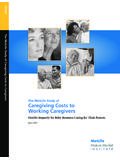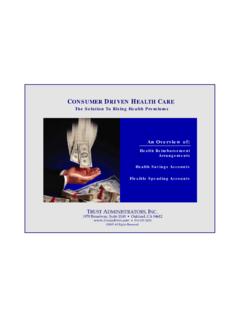Transcription of Addressing the Underlying and Basic Causes of …
1 Addressing THE Underlying AND Basic Causes OF child undernutrition IN developing countries :WHAT WORKS AND WHY?EVALUATION STUDY 2009/2 Published by:Ministry of Foreign Affairs of DenmarkEvaluation DepartmentAsiatisk plads 21448 Copenhagen KDenmarkE-mail: publication can be downloaded : 978-87-7087-145-7 ISBN: 978-87-7087-146-4 (internet version)Other Evaluation Studies:2007/1: Assistance to Development Research2007/2: Synthesis of Evaluations on Technical Assistance2007/3: Evaluating the Impact of Rural Roads in Nicaragua2008/1: Synthesis of Evaluations of HIV/AIDS Assistance2008/2.
2 Synergies between Bilateral and Multilateral Activities2008/3: Assessing Multilateral Organisation Effectiveness2008/4: Economic Empowerment of Women2008/5: Public Private Partnership Programme2009/1: Evaluating Aid Effectiveness in the Aggregate: Methodological IssuesFROM DANIDA S EVALUATION DEPARTMENT DEVELOPMENT COOPERATION, APRIL 2009 Addressing the Underlying and Basic Causes of child undernutrition in developing countries : What Works and Why? April 2009 Dr. Pat Pridmore and Professor Roy Carr Hill, Institute of Education, University of London Disclaimer: The views expressed are those of the authors and do not necessarily represent the views of the Ministry of Foreign Affairs of Denmark.
3 Errors and omissions are the responsibility of the authors. 2 Contents 1. Introduction .. 6 Problem Statement and Rationale ..6 Objective and methodology ..9 Overview of relevant concepts and frameworks .. 12 undernutrition and HIV/AIDS .. 15 Assistance to nutrition .. 17 Costing challenges .. 23 Organisation of the Study .. 24 2. Synthesis of available evidence .. 25 Evidence on short route interventions .. 25 Evidence on long route interventions to address Underlying Causes .. 28 Increasing household food/nutrient production and Micronutrient consumption.
4 28 Improving the quality of care given to young children .. 31 Increasing access to and use of health services, water and sanitation .. 37 Evidence on long route interventions to address the Basic Causes .. 40 Strengthening governance to create an enabling environment .. 41 Increasing community influence over decision-making .. 43 Raising women s status .. 45 Social protection policies .. 47 Macro-economic policy reforms .. 48 3. Discussion .. 52 Challenges of going to scale with effective interventions.
5 52 Choosing an Approach in Different Contexts .. 59 Cost-effectiveness of interventions .. 63 4. Conclusion .. 67 Synthesis of main findings on what works (or does not work) and why .. 67 What needs to be done and what are the facilitators and impediments? .. 70 Research Recommendations .. 72 Final recommendations and conclusions .. 74 76 Appendixes .. 84 Appendix 1 Actions needed within a comprehensive, multisectoral approach to address HIV, food security and nutrition .. 84 3 Appendix 2 Cost effectiveness analyses.
6 86 Appendix 3 Lessons learned from successful community-based food and nutrition programmes .. 95 Appendix 4 Examples of public policy that has successfully improved women's status97 Figures Figure 1 Underweight prevalence in children under five by region (2000-2006) ..7 Figure 2 Methodology for selection and analysis of evaluations and studies .. 11 Figure 3 Indicators of undernutrition .. 13 Figure 4 Conceptual framework for the Causes of child nutrition, health and survival 14 Figure 5 Evidence for the effectiveness of short route interventions to reduce child undernutrition .
7 28 Figure 6 Lessons learned from China's success in rapidly reducing undernutrition 50 Figure 7 SWOC analysis of the international nutrition architecture.. 54 Figure 8 Opportunities, Costs, Incentives and Transaction Costs .. 72 Tables Table 1 Assistance to nutrition .. 22 Table 2 Relative roles of different agencies in providing assistance to nutrition .. 22 Table 3 The cost-benefit ratios for nutrition programmes .. 66 4 List of Acronyms AFD Agence Francaise Developpment AIDS Acquired Immune Deficiency Syndrome CCT Conditional Cash Transfer programmes CIDA The Canadian International Development Agency CRS Catholic Relief Services DANIDA Danish International Development Assistance DFID The Department for International Development EU European Union FANTA Food and Nutrition Technical Assistance (FANTA)
8 Project FAO Food and Agriculture Organization of the United Nations GAIN Global Alliance for Improved Nutrition GTZ Deutsche Gesellschaft f r Technische Zusammenarbeit HIV Human Immunodeficiency Virus HKI Helen Keller International HNP Health, Nutrition and Population Strategy IADB Inter-American Development Bank MDG s Millennium Development Goals NORAD The Norwegian Agency for Development Cooperation ODI Overseas Development Institute OECD Organization for Economic Cooperation and Development NGO Non Governmental Organisation PHC Primary Health Care SCF Save the Children SDH Social Determinants of Health SIDA Swedish International Development Cooperation Agency UDHR Universal Declaration of Human Rights UN United Nations UNAIDS Joint
9 United Nations Programme on HIV/AIDS UNCRC United Nations Convention on the Rights of the child UNGASS United national General Assembly Special Session UNICEF United Nations International Children Education Fund 5 UN SCN United Nations Standing Committee on Nutrition USAID Agency for International Development WB World Bank WFP World Food Programme WHO World Health Organisation 6 1. Introduction Problem statement and rationale This is a very important moment in time. The combination of the food, fuel and financial crises coming together is threatening the livelihoods and food security of millions of people in developing countries and heightening political interest in undernutrition .
10 Repositioning nutrition as central to development has opened a window of opportunity to catalyse change in the international nutrition architecture and increase aid effectiveness in line with the Paris Declaration1. Political interest in nutrition has been further heightened by concern that the Millennium Development Goals (MDG s) are unlikely to be achieved by the target date of 2015 and growing recognition that adequate nutrition is a crucial input to help get five out of the eight Goals back on track2. The central role of nutrition in development was also recognized in the 2005 Report of the Commission for Africa3 and at Copenhagen Consensus 2008 when the expert panel of economists identified undernutrition as the biggest challenge facing the world and delivery of micronutrients as the most cost-effective intervention that could be made4.















